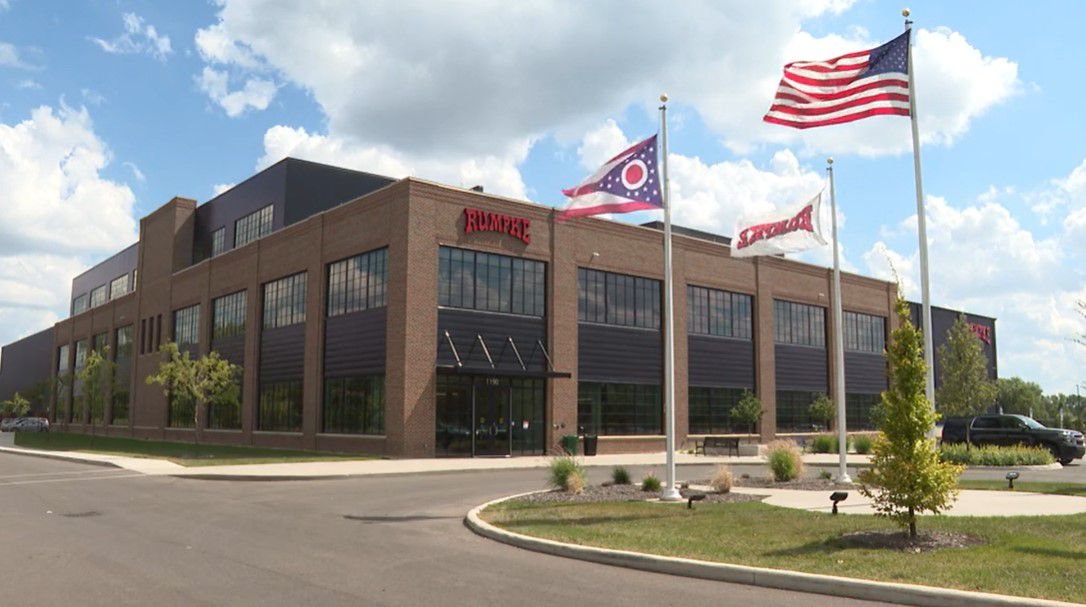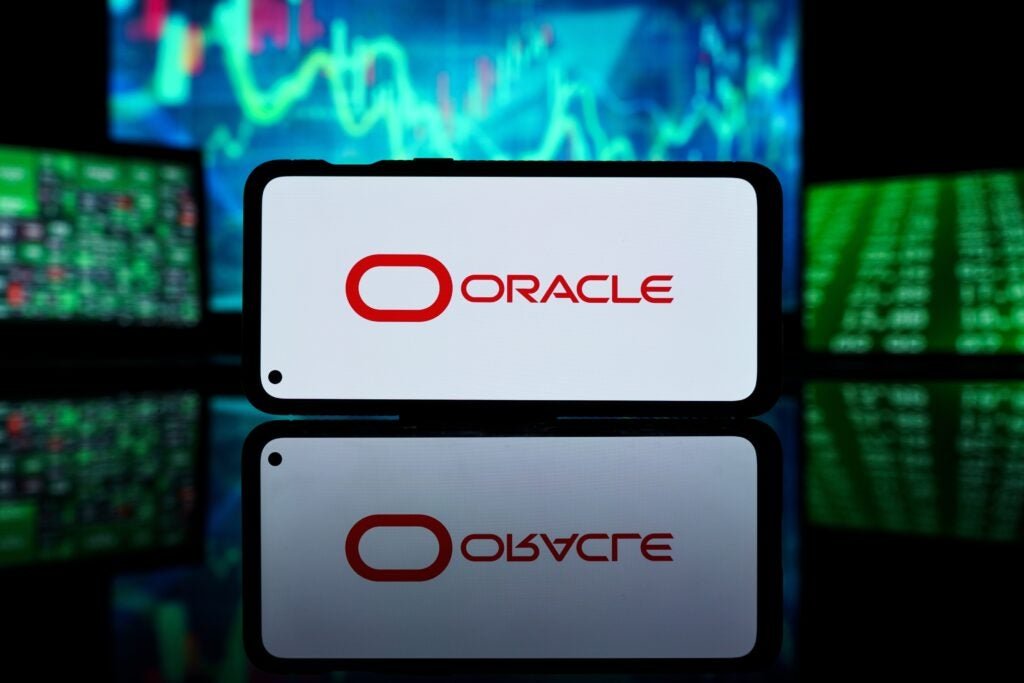Tools & Platforms
Military health system looks to AI, virtual care for battlefield readiness

The Defense Health Agency is deploying artificial intelligence and virtual healthcare technology as it looks to a future battlefield where traditional medicine may not be possible.
The Military health system is already using virtual healthcare capabilities that allow specialists to provide remote consultation to battlefield medics. The technology enables real-time guidance for complex procedures that might have been impossible without immediate specialist presence.
Dr. Stephen Ferrera, acting assistant secretary for Health Affairs, said the military health system is fundamentally rethinking how it delivers care in wartime environments, particularly as the Pentagon shifts focus to regions where vast distances could complicate traditional battlefield medicine.
“We are the only health care system in America that goes to war. And so, our North Star always has to be that we are ready to provide first-class, world-class health care to our service members, to our warfighters, should we have to go into harm’s way,” Ferrara said on Federal Monthly Insights – Health IT.
The modern battlefield
The emphasis on readiness comes as military medical planners grapple with scenarios where air superiority, a key advantage during the War on Terror, may not exist. During conflicts in Iraq and Afghanistan, wounded service members were often evacuated to advanced medical facilities within the ‘golden hour,” contributing to the highest survivability rates in warfare history. But future conflicts may demand that field medics manage patients for extended periods without immediate evacuation options. That’s where technology becomes a force multiplier, according to Dr. Ferrara.
“How can we leverage artificial intelligence, other technological systems to be able to empower and use those as force multipliers for our field personnel?” Ferrara asked. “We can have specialists, whether they’re trauma specialists, intensivists, surgeons — you name it — be able to in real time, help guide people that are on the ground at the front line.”
Healthcare innovation at home and abroad
DHA is also rolling out advanced electronic health record systems designed specifically for deployed environments. The Battlefield Assisted Trauma Distributed Observation Kit — known as “BATDOK” — can track wounded service members from initial injury through their entire care from international warzone evacuation to facilities like Walter Reed National Military Medical Center in Bethesda, Maryland.
“It’s also synchronous, so a provider back here in the states can know exactly what’s going on with that patient in real time and give highly specialized, informed clinical decision support to a battlefield provider,” Ferrara said.
The technology is moving beyond battlefield applications. Military treatment facilities are implementing ambient listening technology that automatically transcribes clinical notes as providers speak — reducing administrative burden and allowing more time for direct patient care.
“The technology can listen, and you can speak to it, and it can just document instead of the old days where you had to write it and then type it out” Ferrara said. “That enables us to have our people who are our most valuable resource, spending their time doing direct patient care.”
The Military Health System is also leveraging generational advantages in technology adoption. Ferrara noted that medical personnel under 40 are ‘largely digital natives’ who have grown up with technology, making them more comfortable with new systems in their practice.
However, the increased reliance on technology raises questions about cybersecurity and communication reliability in contested environments. Military planners recognize that cyberspace is now part of the battlefield, creating both opportunities and vulnerabilities.
“We are always looking at how could we do these things asynchronously or offline.” Ferrar said. “That’s where things, especially like AI can come into play, where if a person on a battlefield can have a device and have tools that can help them,” Ferrara told The Federal Drive with Terry Gerton.
Technology deployment is part of a broader modernization effort that includes expanding partnerships with civilian healthcare systems and the Department of Veterans Affairs. The Military Health system is implementing a common electronic health record, MHS Genesis, that will eventually provide seamless care transitions from military service to veteran status.
“Theater Genesis” represents the deployed version of this system, already operational on hospital ships and in European theaters. The goal is creating an integrated healthcare record that follows service members from stateside facilities through combat zones and back.
For Ferrara, who served 25 years as a Navy physician with four operational deployments, the technology investments represent a personal commitment to ensuring military medical readiness.
“The most important thing is that I can feel I take a very personal stake in knowing that our service members, when they go down range in harms way, are going to get the best care that they can possibly get. That’s honoring the pact that we make, not only with those service members, but with their parents,” Ferrara said.
Copyright
© 2025 Federal News Network. All rights reserved. This website is not intended for users located within the European Economic Area.
Tools & Platforms
US Senator Cruz Proposes AI ‘Sandbox’ to Ease Regulations on Tech Companies

Republican U.S. Senator Ted Cruz introduced a bill on Wednesday that would let artificial intelligence companies apply for exemptions to federal regulation to help them experiment in developing new technology.
Cruz leads the Senate Commerce Committee, which held a subcommittee hearing on Wednesday about ways Congress can lower regulatory hurdles for the tech industry to give U.S. companies a boost in competing with China.
“A regulatory sandbox is not a free pass. People creating or using AI still have to follow the same laws as everyone else,” Cruz said at the hearing.
If passed by Congress, the bill would allow agencies that oversee federal regulations to consider applications from companies to be exempt from regulations for two years at a time, and require companies to outline the potential safety and financial risks and how they would mitigate them.
Consumer rights advocacy group Public Citizen raised concerns about provisions in the proposal that would allow the White House’s Office of Science and Technology Policy to override decisions by agency heads, and said the proposal “treats Americans as test subjects.”
“The sob stories of AI companies being ‘held back’ by regulation are simply not true and the record company valuations show it,” said J.B. Branch, Public Citizen’s Big Tech accountability advocate.
Cruz’s sandbox bill does not include a ban on state regulation, something that the tech industry has sought and the White House has said is necessary to boost innovation. A bid to put a ban in place as part of President Donald Trump’s tax-and-spending bill was defeated in the Senate on a 99-1 vote in July.
OSTP Director Michael Kratsios said at the hearing that Congress should reconsider the issue.
“It’s something that my office wants to work very closely with you on,” he told Cruz at the hearing.
Topics
USA
InsurTech
Legislation
Data Driven
Artificial Intelligence
Tech
Was this article valuable?
Here are more articles you may enjoy.
Interested in Ai?
Get automatic alerts for this topic.
Tools & Platforms
Recycling facility uses AI to transform waste management

COLUMBUS, Ohio — A new high-tech recycling center in central Ohio is transforming the way recyclables are processed, and it’s putting artificial intelligence to work in a big way.
Rumpke Waste & Recycling, a family-owned company with more than 90 years of experience, has opened what it calls the most advanced recycling facility of its kind in North America.
At 226,000 square feet, the $100 million plant in Columbus is designed to process up to 250,000 tons of recyclables each year.
“We can do that at a rate of 60 tons per hour,” said Amanda Pratt, Rumpke’s Senior Vice President of Communications.
With 19 optical scanners, four ballistic separators, and cutting-edge AI technology, the facility sorts and separates each item with incredible precision.
“We’re built for growth. We’re built for the population of today as well as the population well into the future,” Pratt said.
The process begins on the tipping floor, where trucks unload loose materials collected from homes and businesses. From there, the materials are loaded onto a conveyor with a drum feeder and sent to spinning tubes called trommels.
“Those spinning trommels remove materials or separate materials according to size,” she explained.
Then, the sorted material moves along a conveyor to the presort line, where employees manually remove any items that shouldn’t be in the recycling stream.
“Next up, the material reaches a set of ballistic separators,” she continued.
These separators split the paper and fiber materials from the rest, sending them to different conveyors. Then come the optical sorters, some of which are powered by artificial intelligence, identifying and sorting materials based on shape, size and even color. After that, metals are separated, such as aluminum and steel.
The last step is baling, compressing the materials into massive blocks before they’re shipped out. They weigh between 800-2,000 pounds each.
“And the best part is about 80% of the material that we’re processing right here, stays in the state of Ohio and is sent to manufacturers right here in the central Ohio area who are turning your recyclables into new products,” she said.
Some of the recycled material becomes everyday items like irrigation pipe, detergent containers, lotion bottles, aluminum cans, and even alcohol bottles.
The facility also includes an interactive Education Center, developed in partnership with COSI and The Ohio State University. It’s designed to help the public learn about the recycling process and the role it plays in building a more sustainable future.
From start to finish, artificial intelligence is helping Rumpke Waste & Recycling sort materials faster and more accurately than ever before, offering a glimpse at the future of recycling, and the environmental innovation happening in central Ohio.
Tools & Platforms
AI’s New Cloud King: Oracle’s Rally Could Rewrite ETF Playbooks – ARK Next Generation Internet ETF (BATS:ARKW), Global X Artificial Intelligence & Technology ETF (NASDAQ:AIQ)

Oracle Corp’s ORCL shares soared over 40% on Wednesday, a day after posting its earnings powered by booming demand for AI infrastructure, pushing CEO Larry Ellison ahead of Tesla Inc TSLA scion Elon Musk as the world’s wealthiest individual.
Beyond the headline wealth change, the move has considerable implications for ETFs, showing how AI infrastructure is becoming more integral to broad-market and thematic funds alike.
Oracle’s profits highlighted the company as a prime supplier of data center space and cloud computing for AI use. With an eye-popping $455 billion AI services backlog and multi-billion-dollar contracts such as providing OpenAI with 4.5 gigawatts of energy to power ChatGPT, Oracle made it clear to the world that it is more than a software behemoth now.
Impact On ETFs
For holders of broad-market ETFs, Oracle’s rise comes with an immediate impact on portfolio weightings. Sector-specific ETFs like Technology Select Sector SPDR XLK and Vanguard Information Technology ETF VGT stand to gain, as Oracle moves higher in the ranks of the most heavily weighted tech names. Both funds are up around 1.5% on Wednesday.
Thematic ETFs on AI, cloud, and next-generation technologies are also being rewired. If Oracle crosses $1 trillion in valuation, it joins a very exclusive group. That milestone might spark reappraisals by active managers and ETF issuers alike, potentially creating new “AI infrastructure” baskets or raising its inclusion in existing thematic funds.
Others like Global X Cloud Computing ETF CLOU, WisdomTree Artificial Intelligence & Innovation Fund WTAI, and ARK Next Generation Internet ETF ARKW might have to change exposure to reflect Oracle’s new leadership in AI infrastructure.
The ripple effects even extend to ETFs with broader innovation themes. For example, both iShares Exponential Technologies ETF XT or Global X Artificial Intelligence & Technology ETF AIQ track companies positioned to benefit from AI adoption.
Oracle’s repositioning as a critical AI infrastructure player makes it harder for ETF managers to overlook.
The Bigger Picture For ETF Investors
Investors seeking to capitalize on the AI boom have several options for gaining diversified exposure to the companies driving this growth, rather than betting on individual stocks.
This episode shows a larger trend: AI-fueled growth is no longer the exclusive domain of mainstream software or chip stocks. ETFs are keeping pace with the industry, providing investors with vehicles to harness both broad-market tech appreciation and thematic exposures in AI, cloud, and enterprise infrastructure.
Oracle’s explosive growth shows how the fortunes of a single company can cascade through dozens of ETFs, affecting flows, weightings, and sector performance.
Read Next:
Image: Shutterstock
-

 Business2 weeks ago
Business2 weeks agoThe Guardian view on Trump and the Fed: independence is no substitute for accountability | Editorial
-
Tools & Platforms4 weeks ago
Building Trust in Military AI Starts with Opening the Black Box – War on the Rocks
-

 Ethics & Policy2 months ago
Ethics & Policy2 months agoSDAIA Supports Saudi Arabia’s Leadership in Shaping Global AI Ethics, Policy, and Research – وكالة الأنباء السعودية
-

 Events & Conferences4 months ago
Events & Conferences4 months agoJourney to 1000 models: Scaling Instagram’s recommendation system
-

 Jobs & Careers2 months ago
Jobs & Careers2 months agoMumbai-based Perplexity Alternative Has 60k+ Users Without Funding
-

 Education2 months ago
Education2 months agoVEX Robotics launches AI-powered classroom robotics system
-

 Podcasts & Talks2 months ago
Podcasts & Talks2 months agoHappy 4th of July! 🎆 Made with Veo 3 in Gemini
-

 Education2 months ago
Education2 months agoMacron says UK and France have duty to tackle illegal migration ‘with humanity, solidarity and firmness’ – UK politics live | Politics
-

 Funding & Business2 months ago
Funding & Business2 months agoKayak and Expedia race to build AI travel agents that turn social posts into itineraries
-

 Podcasts & Talks2 months ago
Podcasts & Talks2 months agoOpenAI 🤝 @teamganassi

